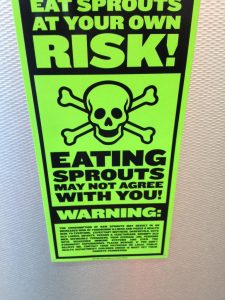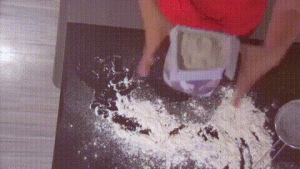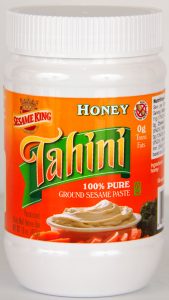I collaborated with a team of food safety professionals on the below article. Byline is:
Eric Moore, Director of Food Safety and Industry Relations, Testo
Ben Chapman, Professor, Food Safety Specialist, NCSU
Don Schaffner, Professor, Extension Specialist, Rutgers
Steven Mandernach, Executive Director, AFDO
Hal King, CEO Active Food Safety
March 2020 was a month unlike any of us have experienced before. Beyond the transition to working remotely and the seemingly endless video meetings and webinars, we’ve collectively learned a lot about coronaviruses, environmental stability, inactivation, transmission routes, how to perform wellness checks of employees, and have fielded dozens of questions from food industry stakeholders and the media. This tragic pandemic has led to partnerships and collaborations towards many common public health, food safety and risk goals.
The current challenges to ensuring the health and safety of employees and customers has never been more difficult. There are likely unintended positive food safety impacts that are being seen across the food system. We guess that employee handwashing practices are likely at an all time high with all the added focus. Extra attention to proper chemical use to clean, sanitize and disinfect both food and non-food contact surfaces, especially high-touch surfaces, is almost certainly happening.
Although much of what we know about COVID-19 is emerging, many media outlets are sharing consistent (and evidence-based) messages that food safety professionals have been teaching and preaching for years. On a more personal level, hearing our kids belt out new handwashing songs, watching Tik-Toks on social distancing, and now all know a little something about epidemiology – flattening the curve — is heartening. There is even a slick new website, Wash Your Lyrics, that you can use to generate your own song and handwashing poster with everything from Styx to Post Malone to the Grateful Dead. It’s been truly amazing to see how in the face of adversity some amazing advancements in enabling and supporting behavior change can happen. Of course we would have preferred there be no pandemic, but this is now the new normal.
Since food manufacturing, foodservice, food retail, agriculture and transportation are all classified as essential critical infrastructure, the collective food industry has a responsibility to respond. It is with great thanks and admiration to these organizations and the numerous individuals that run them who are helping the rest of us get through daily life by ensuring we have safe food which is essential for our survival. We are also trying to find any positives that may result such as better reporting, and creative approaches to food manufacturing and sales.
After conversations over the last few weeks at GFSI in Seattle, then AFFI-Con in Las Vegas we thought it might be time to take a minute to share some of the ideas and recommendations because it’s never too late to start planning for what comes next and being ready for the next challenge including the potential for seasonal reemergence (and don’t forget a pandemic flu is likely in our future as well). How can food safety professionals learn from our current situation to establish sustainable practices? Here is what we have so far. The list is not all inclusive but includes ideas we feel merit further consideration, action and diligence:
Management Team:
- Implement an employee health and wellness program that supports pro-active restriction and or exclusion.
- Have a pandemic response plan incorporated into your organization’s Business Continuity Plans which should include key aspects of service limitations, increased cleaning/sanitizing and disinfection, etc.
- Designate roles within your organization that will connect to global, national, regional and local regulatory authorities to monitor the situation and to deploy adequate control measures to continue operations.
- Identify backups for each job position and if possible alternate production sites to offset production delays.
- Promote remote work for non production or essential roles. Digital food safety management systems (FSMS) are a great tool to facilitate and maintain adequate processes and controls are being met even from a remote location.
- Consider providing transportation for employees that use public transportation.
Perishable Food:
- Reduce food waste by lowering par inventory levels.
- Identify if/what products in your inventory that can be frozen without quality compromises, and used at a future date. Think about consolidating inventory in preparation for staff reductions
- When closing a facility, divert safe food to local food banks or shelters – donate as much product to them as possible as long as it has not passed its expiration date.
- To assist locations in returning to normal operations (post pandemic) discard perishable products near the end of useful life.
Refrigeration Recommendations:
- Reorganize inventory and condense products into fewer refrigeration units.
- Empty refrigerators should be turned off, as empty refrigeration space places more stress on the cooling system that could lead to unnecessary wear and tear. This also conserves energy and allows for deep cleaning to take place as well as preventative maintenance to ensure optimal functionality once placed back into service.
Technology:
- Adopt Digital Food Safety Management systems (DFSMS) based on HACCP guidelines that enable real time refrigeration temperature monitoring and alert based operational compliance reporting. These systems have the ability to consolidate multiple important critical food safety reporting activities by providing visibility and awareness across an entire organization
- Implement the use of infrared handheld thermometers as a pre-screening tool to measure temperatures of individual employees at the start/end of their shift. Screening methods and results should be based on CDC guidance and confirmed by a medical professional.
- Investigate the use of advanced thermal imaging instruments to assess elevated body temperatures and in consultation with local health professionals and legal advisors, make decisions to protect employee health.
Communication Practices:
- Leverage technology to maintain internal communication (teleconference, video conference and webinar).
- Keep handwashing and hand sanitizing and employee health top of mind for employees and family members via job aids and training
- Encourage customers to use order ahead options and delivery services.
- Promote the use of cashless payment at operating locations.
Operations Planning:
- Incorporate the use of a daily set of health assessment questions as part of temperature monitoring (are you sick, have you been around anyone sick, do you live with anyone that is sick) based on the CDC guidance for employee wellness.
- Decide when to close dining rooms, restrooms and seating areas and reassessment plans for reopening.
- Protect cashiers by providing physical barriers between them and customers
- Clean and disinfect credit card pin pads and touch screens between each customer at indoor self-checkout locations.
- Clean and disinfect outdoor touch screens/credit card pin pads at routine intervals.
- Eliminate self-serve items, buffets, and areas that encourage high touch surfaces and when possible package foods that are sold individually.
- Designate continuous cleaning and disinfection of high touch surfaces in the entire facility (door knobs/handles, handrails, phones, light switches, hand sinks, paper towel dispensers, restrooms, credit card pin pads and touch screens, etc.) to one or more employees
- Have liquid hand sanitizer stations as well as sanitizer wipe stations in operating locations so employees can sanitize hands when hand washing is not feasible
- Designate employees to monitor customers entrances to ensure that all consumers are prompted to use sanitizer prior to entering.
- Set up que line placements (e.g., X every 6 feet) and signage to ensure customers are able to stand 6 feet apart IF a line is likely for pick-up service.
- Place signage encouraging anyone who feels ill to not enter and provide alternatives as to how to help them with food essentials (delivery, curbside pickup).
- Consider transition from traditional paper and laminated menus to a digital format, when re-opening. Further consider systems that allow the customer to use their own device to access menus.
Production Planning:
- Review your operations production and operating hours, should they be shorter or different from normal operating hours.
- Reduce or rethink your menu to take advantage of alternate labor models or product availability.
- Consider simplifying your menu items to less complex products, this would support a more sustainable labor pool that may have less formal culinary training as well as reducing the amount inventory which should help control food waste during such an unpredictable event.
- Divide employees into small function-based teams and stagger production times or production areas to promote adequate social distancing.
We have all had people ask us where to get information and stay up to speed with the newest and emerging information about COVID-19. Here are links to the most accurate resources that we are using daily to answer our food safety questions.











